Causes, signs and types of otitis in children - how to treat a child
Remember that excruciating earache that kept you awake as a child? Rather, yes, because 8 out of 10 children have had otitis media at least once. Usually the disease develops as a complication after a cold. And no one is safe from it. Therefore, it is important for parents to know how to prevent inflammation of the auditory organ, and how to remove it if it could not be avoided.
Otitis media is an inflammatory process in the human auditory system.
Classification
Otitis - inflammation of the ears. Depending on the localization, it is divided into three types:
- Outer. It affects the shell and the auditory canal without tying the membrane into the process.
- Average. It affects the Eustachian tube (the canal connecting the nasopharyngeal and tympanic cavities), the tympanic cavity itself, the cave and the cells of the mastoid process (the part of the temporal bone to which the muscles responsible for tilting and turning the head are attached).
- Internal (labyrinthitis). Covers the cochlea, the entrance to it and the semicircular canals.

Inflammation develops very quickly, masquerading as a typical cold.
According to the duration of the flow, they distinguish:
- spicy(not longer than 3 weeks);
- subacute(1-3 months);
- chronic(more than 3 months).
Type of inflammation:
- catarrhal(having no discharge);
- exudative(fluid comes out, released from the vessels of inflamed tissues);
- purulent(pus flows from the ear).
There are also unilateral and bilateral otitis media (infection of one ear or both).

You can determine the disease in a child by pressing a finger on a small cartilage in the auricle (tragus).
Causes of the disease
The disease is caused by viruses, fungi or bacteria in the presence of favorable conditions for the development of these microorganisms. The causes leading to inflammation differ depending on which part of the ear is affected.
External otitis is preceded by mechanical damage to the ear canal(for example, when removing sulfur with a metal object). Microbes - fungi or bacteria penetrate the wound. One of the causes leading to the disease is water ingress while swimming in a pool or open water.
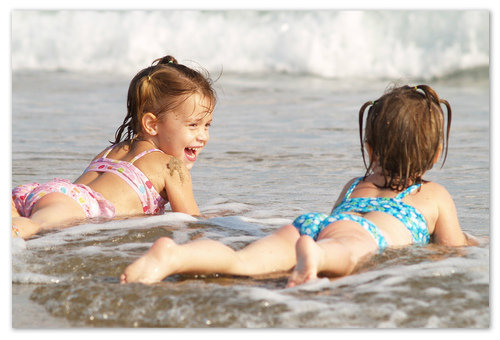
The easiest thing to do is to cover the ear canal with a cotton swab moistened with petroleum jelly when bathing.
Albina writes:
“A child at 3 years old began to hold on to his ear and complain of pain in it. I decided to look first myself and saw that there was a foreign object. Immediately went to the otolaryngologist. The doctor examined his son and carefully removed the part from the toy. She obscured the ear canal, tightly adhering to its walls. Inside, a favorable environment was formed for the reproduction of harmful microorganisms.
Otitis media develops against a background of weakened immunity after SARS, influenza or. Pathogenic flora (usually bacteria, rarely viruses) enters the middle ear from the nasopharynx through the Eustachian tube.
Otitis externa rarely develops because access to the labyrinth is limited. Pathogenic microorganisms get into it only with infections of the blood or brain.
One of the reasons is the lack of (or incorrect) treatment of inflammation of the middle ear.
The disease is more susceptible to children who have:
- anemia;
- exudative diathesis;
- lack of body weight;
- chronic diseases of ENT organs;
- immunodeficiency states.
Important! Otitis media is more common. It is more common at the age of 0.5-3 years. This is due to the anatomical features in children. The infection enters the middle ear through the Eustachian tube, and it is short in babies: microorganisms do not encounter obstacles in the way.
The course of the disease, possible complications and consequences
Otitis externa begins with infection of the ear canal, resulting in the formation of a furuncle. It matures within 2-3 days and bursts. Usually the outcome of the disease is favorable. In rare cases, the secreted pus enters the subcutaneous tissue of the temporal region. This leads to more severe inflammation.
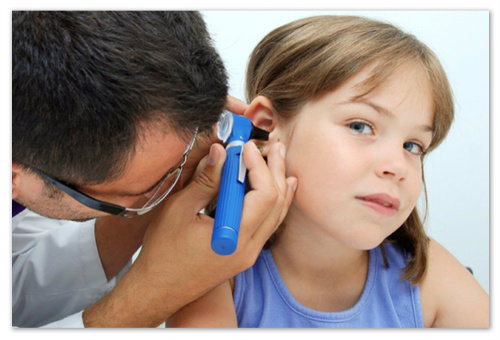
Otitis media is the most common form of the disease in children.
Otitis media develops in stages:
- Inflammation of the Eustachian tube (the beginning of infection).
- Catarrhal form of the disease (pathogenic microflora has settled throughout the organ).
- Preperforative stage (pus accumulates).
- Perforation of the tympanic membrane from pressure exerted by pus (a gap is formed).
- Postperforative stage (purulent contents mixed with blood comes out).
- Recovery stage (inflammation passes, the eardrum grows over).
Otitis media lasts 2-3 weeks. Possible complications:
- reduction or complete loss of hearing;
- the transition of the disease to a chronic form;
- labyrinthitis (involvement in the inflammatory process of the inner ear);
- mastoiditis (transition of infection to the mastoid cranial process);
- intracranial complications (cerebral or epidural abscess, meningitis, vascular lesions).
Labyrinthitis in children occurs in isolated cases. Depending on the severity of the disease, the disease lasts from several weeks to several months. Complications are associated with brain damage and Meniere's disease (an increase in the volume of fluid in the inner ear, which leads to disorientation in space, tinnitus, dizziness and the development of deafness).
Signs of otitis media in children
Symptoms of otitis externa (not always appear):
- hearing loss;

A common symptom of the disease is hearing loss.
- swelling and redness of the shell;
- itching in the ear canal (if the cause is a fungus);
- pain that increases when opening the mouth, swallowing and chewing movements, pressure on the ear;
- discharge of exudate or pus.
How to know that the baby has an earache?
Press down on the tragus (cartilaginous protrusion of the front of the ear). If the baby is in pain, he will let you know with strong crying. You can judge the pain syndrome by other signs: the child is capricious, refuses to eat, pats his ear.
Important! With external otitis, the temperature does not rise, and if it rises, then it does not exceed 38 degrees.
With the defeat of the middle part of the auditory organ, symptoms are noted:
- throbbing pain radiating to the head, teeth (as if “shooting” in the ear);
- the child complains of noise and hearing loss;
- an increase in body temperature to 38 degrees and above;
- purulent discharge mixed with mucus and blood (corresponding to the postperforative stage, the pain subsides).

An untreated tooth can be the cause of ear pain.
Temperature is one of the main signs of inflammation of the auditory organs. But sometimes the disease proceeds without its increase. Therefore, show the child to the doctor if you find at least one of the symptoms described above.
Important! Ear pain is not always the result of otitis media. It also appears with mechanical damage to the eardrum, caries of the dental nerve or cervical lymphadenitis. To exclude these diseases, be sure to seek medical help.
If the treatment of otitis media was ignored, or the child suffered serious infections of the blood or brain, then damage to the inner ear is possible. It is characterized by dizziness, deterioration or loss of hearing, noise in the head and the appearance of "flies" in the eyes. The disease is accompanied by nausea, vomiting, impaired coordination and attention.
How to treat?
What to do if you suspect a child has otitis media? The main thing - do not engage in self-diagnosis and self-treatment. Choosing the wrong methods leads to complications, one of which may be permanent hearing loss. Go to the doctor. He will determine what the baby is sick with and tell you how to properly treat him.
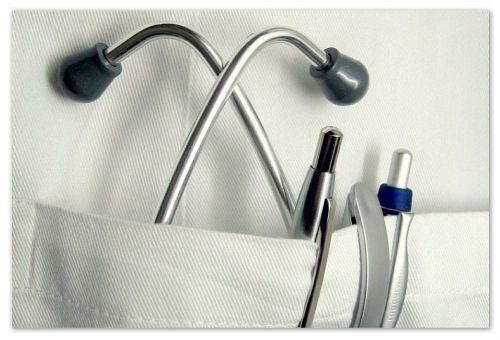
Evgeny Olegovich draws the attention of mothers to three points:
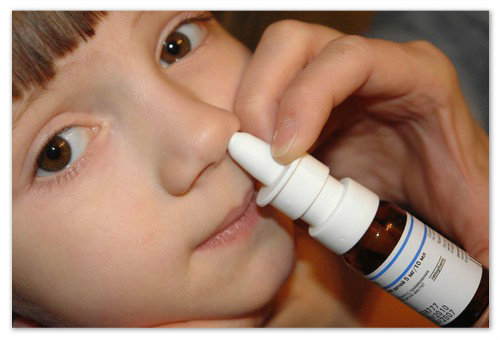
Local treatment by instillation is carried out only if the eardrum is intact. If there is a hole in it, the drugs will enter the middle ear or deeper. This is fraught with hearing impairment and the development of serious complications. Since examination is not possible at home, show the child to the ear-nose-throat.
Natalia writes in a review:
“My daughter has a cold. I treated her cough and throat. But the runny nose was not strong, so nothing was instilled into the nose. And one day my child comes up, holding his ear - and there is pus with blood. It turned out that my girl had been in severe pain for a long time, because she decided that she would have to get injections. It is good that the membrane has recovered, and hearing has not deteriorated. But it will be a lesson for me: the treatment should be complete. As the doctor said, if I had used the drops, there might not have been otitis.
Watch the special issue of Dr. Komarovsky's school on otitis media.
Medications
Otitis externa should be treated with topical agents. Here is a brief overview of them:
- for children from 2.5 years. The drug has anti-inflammatory and antibacterial properties.
- without age restrictions. The antibacterial effect is combined with painkillers.
- for children and adults. Combines components that reduce pain and inflammation (not an antibiotic).
![]()
Otipax has an anti-inflammatory and local anesthetic effect.
Important! Before instillation, warm the bottle in your hands. For children under 16 years old, drip 1-2 drops 2-3 times a day. The duration of treatment is 6-10 days.
Inflammation of the middle ear at an early stage is treated with vasoconstrictor drops in the nose:
- Otrivin Baby (suitable for newborns).
- Tizin Xylo (from 2 years with a dosage of 0.05%, from 6 - from 0.1%).
Attention! Do not use drops for adults. The concentration of active components in them is higher. It is not suitable for children, because it causes severe pain and burning.
Bury the selected remedy 1-2 drops three times a day in each nostril of a child who has taken a lying position. The duration of treatment is 4-5 days. If symptoms worsen, antibiotic therapy is prescribed.
If the eardrum is intact, you can treat the sore ear with drops with an antibacterial property (or). In case of perforation of the membrane, exclude the instillation of any drugs. Then antibiotics are taken in the form of suspensions, tablets or injections. The most common are products containing (taken after a doctor's prescription according to his recommendations).
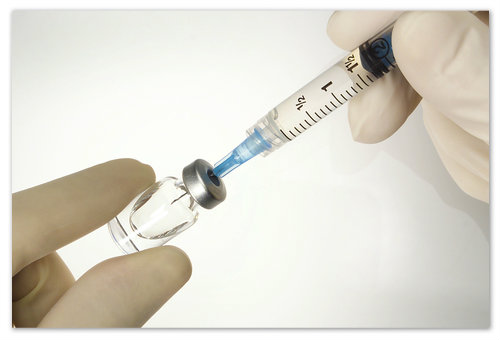
The doctor may prescribe an antibiotic injection.
ethnoscience
Alternative methods of treatment are permissible only for external otitis media. A few recipes:
- Soak a gauze pad in camphor or boric alcohol and apply it to the affected ear. Cover with plastic or wax paper and secure with a scarf. Leave on for 15-30 minutes. The procedure is suitable if the boil has not yet matured. You can not do such a compress if the child is not yet a year old. Up to 6 years, alcohol must be diluted to a concentration of 40-50% (can be replaced with vodka).

The compress should be kept as long as it has a thermal effect.
- If the inflammation is caused by a fungus, lubricate the ear canal with a solution of soda(cannot be buried). Alkaline environment is detrimental to this pathogen.
- Applying heat(boiled egg, hot towel).
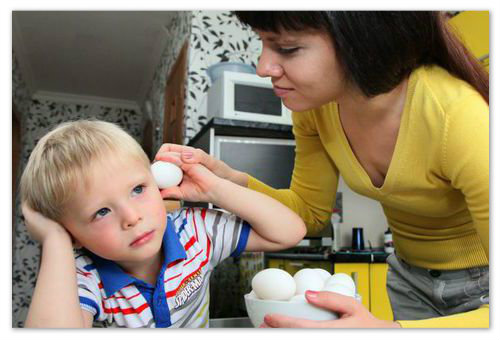
For warming up, an ordinary hard-boiled chicken egg is also suitable.
Attention! You can warm your ear only if there is no pus. With otitis externa, this is easy to check by looking into the ear canal. If the boil has not formed a head, warming procedures are acceptable. But when the inflammation has affected the middle organ, it is impossible to know what is inside. Then give up the heat completely, so as not to make things worse. Komarovsky is of the same opinion.
Prevention
After the amendment, immunity against the pathogen is not preserved, so the development of the disease cannot be ruled out again. To keep your child's ears healthy, prevention will help:
- In windy weather, wear a hat.
- After bathing, remove water from the ear canals with cotton swabs.
- Treat colds promptly and correctly.
- Do not use improvised means to clean your ears. For this purpose, special sticks with a limiter are suitable.
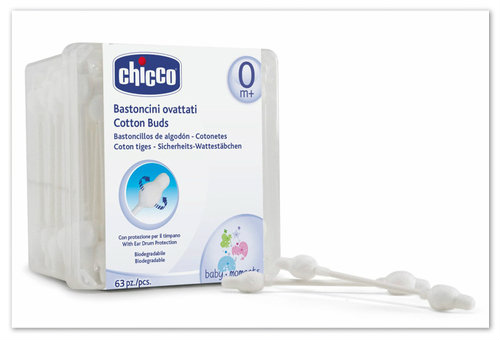
Use cotton swabs with a stopper for added security.
Kochetkov Pavel Alexandrovich (otolaryngologist), writes:
“One of the common causes of otitis in children under one year old is the ingestion of formula milk into the Eustachian tube. Therefore, it is important to properly feed the baby: you need to keep him in an inclined position, and the bottle must be sterile. But babies have nothing to be afraid of - breast milk will not do harm, even if it gets into the canal that connects the nasopharynx with the middle ear. It cannot cause an infection."
If a child has frequent outbreaks of the disease, it has become chronic. In this case, it is rational to use ear drops with an anti-inflammatory effect at the first symptoms of an exacerbation (,). Strengthening the immune system, refusing to immerse yourself in water with your head and wearing tight hats in a draft will help reduce the likelihood of relapses.
Almost every mother faces otitis media in a child. Therefore, it is important to know how to behave to parents in case of suspected ear inflammation. You can not drip everything and warm the sore spot without finding out the cause of the disease and the form of its course. Only a doctor can make a diagnosis and prescribe adequate treatment. Then the baby will quickly recover, and his hearing will remain as sharp as it was.
Alisa Nikitina
